PROTECT YOUR DNA WITH QUANTUM TECHNOLOGY
Orgo-Life the new way to the future Advertising by AdpathwayWinter radishes take longer to develop than their swifter, smaller salad relatives, but their nutrition and large, dense roots earn them a spot in the edible landscape.
They store well, even in the ground, and stay crisp longer than spring radishes. Shorter days and cooler temperatures trigger growth of the cold-hardy root vegetables, usually planted in late summer and fall for an autumn or winter harvest.
Winter radish varieties do best with a late sowing to develop in cool weather, which keeps them from bolting (flowering too early) in warm weather before roots can form. Their flavor ranges from mild to spicy, depending on the variety. Like other hearty root vegetables (turnips, beets), they’re primarily used in cooking and stir-fries.
In addition to the roots, the leafy greens are edible. Enjoy them raw as a peppery addition to salads and pestos, or saute and stir-fry for a mildly spicy flair. Winter radish varieties are white, green, purple, and even black, the most pungent of the group.
In cold climates, sow winter radish varieties in mid to late summer, usually July or August. Consider extending the season with a cold frame or floating row covers. In mild climates, plant them in the fall for a winter harvest. They average about eight weeks to readiness.
Try one of these delicious winter radish varieties for a quick harvest. Scatter seeds and thin seedlings to two to four inches apart (slightly more than smaller types). The spacing allows the larger roots room to mature underground without crowding.
Mantanghong Watermelon Radish
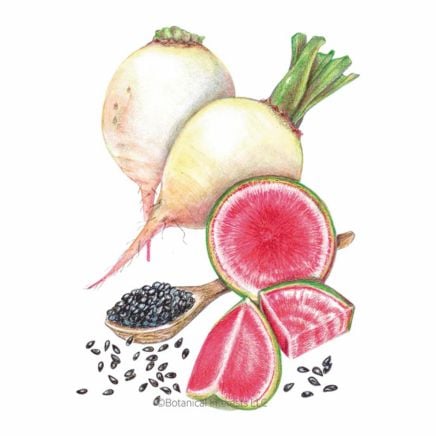
Mantanghong Watermelon Radish Seeds
Round Black Spanish Radish
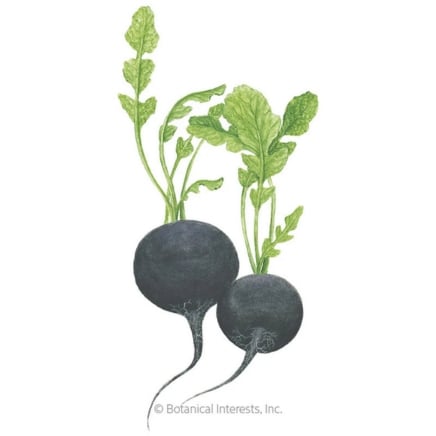
Round Black Spanish Radish Seeds
Miyashige White Daikon Radish

Miyashige White Daikon Radish Seeds
‘Mantanhong Watermelon’
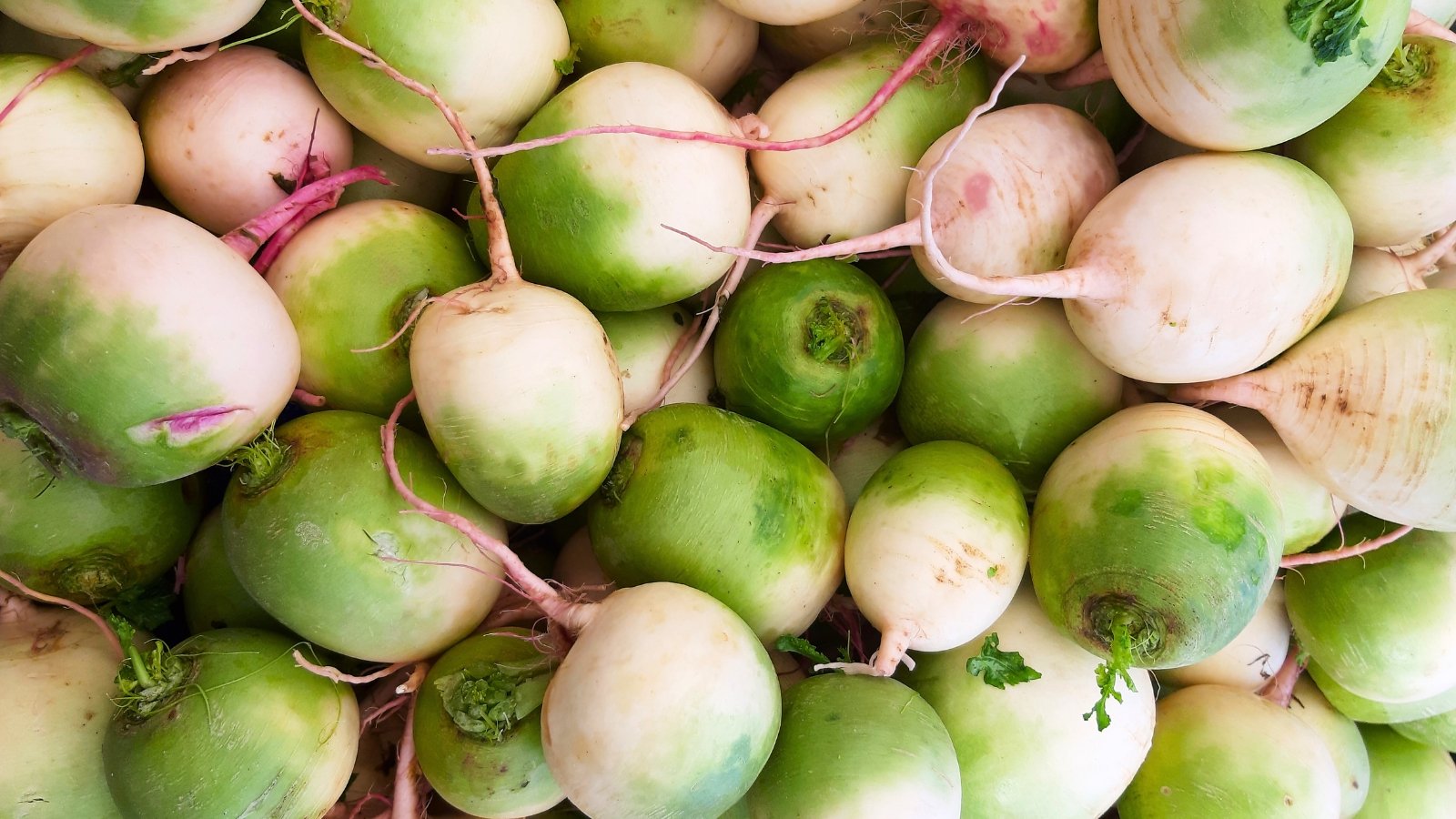 Pretty pink inside with a bit of bite.
Pretty pink inside with a bit of bite.These are such pretty winter radish varieties, they’ll be the star of the winter crudité platter. Their greenish skin gives way to a striking magenta interior, like a petite summer melon. Enjoy the mild-flavored and crisp root raw, pickled, or cooked.
‘Mantanhong Watermelon’ yields three-inch rounds that can weigh up to one pound each. The frost-tolerant crop is ready to harvest in 65 days. Sow them 8 to 10 weeks before your first fall frost, or as soil temperatures remain above 40°F (4°C) for germination.
‘Round Black Spanish’
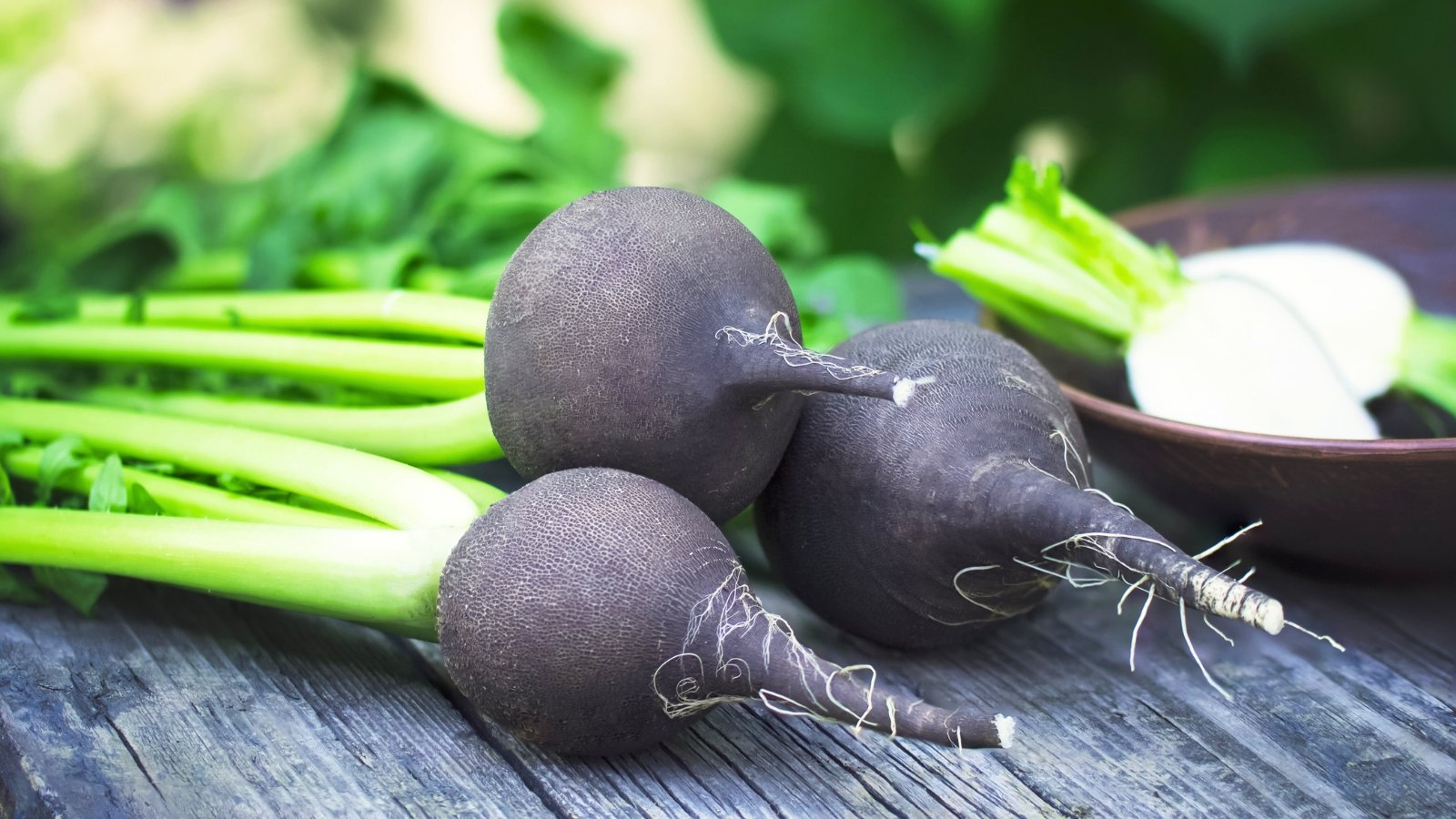 Bold, spicy roots that mellow when cooked.
Bold, spicy roots that mellow when cooked.Black winter radishes bring a pungent flavor with a spiciness that tops milder green and white varieties. ‘Round Black Spanish,’ also called ‘Noir Gros Rond d’Hiver,’ is an heirloom likely from the Mediterranean region and grown since at least the 1500s.
The black rounds bring a peppery heat, raw or cooked, though spiciness mellows with cooking. The three to four-inch radishes have black skins and a bright white interior. They keep all winter with proper storage in a root cellar or similar cool, dry, dark space.
Clip off the leaves at harvest (and eat them!) for the longest-lasting stored radishes. The leafy tops draw moisture from the roots, even after lifting, lessening the shelf life.
Daikon ‘Miyashige White’
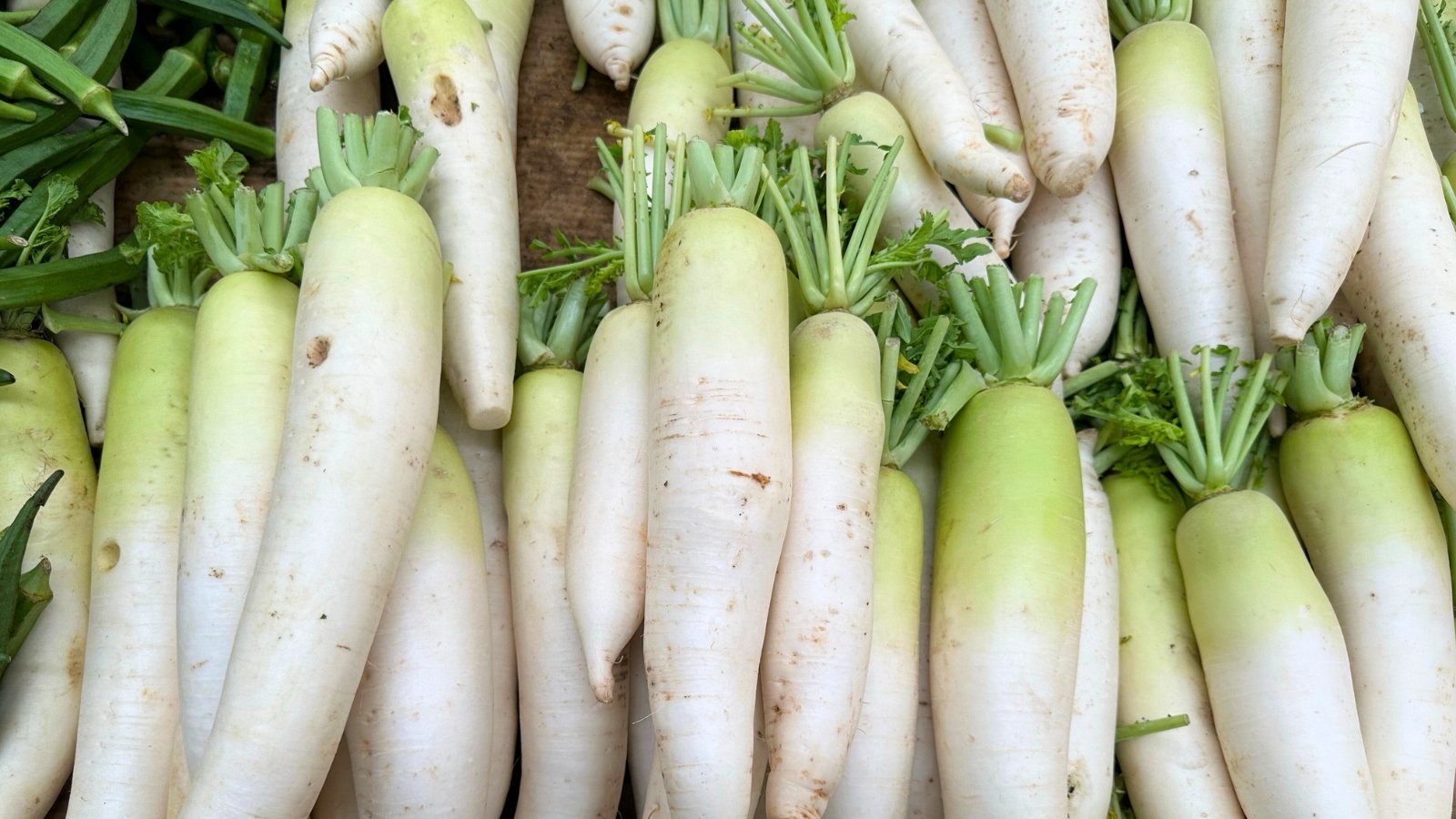 Grows best in cool weather with steady moisture.
Grows best in cool weather with steady moisture.We include these Asian root vegetables on our list because of their long maturation and autumn or winter harvest. In mild climates, they grow across fall and winter.
Daikon is Japanese for “great root,” and ‘Miyashige White’ daikons are one of the Japanese heirloom winter radish varieties. Their distinct form and flavor make them worthy of growing, with a mild flavor among winter types. They spice up raw dishes with young roots and stir fries with large, mature roots with a light flavor.
Daikon may have elongated, tapered roots or short, rounded roots. ‘Miyashige White’ is long, greenish-white, and tapered, ready to harvest at 12 to 18 inches long and two to three inches wide. Like the winter radishes on our list, ‘Miyashige White’ responds to shorter day-lengths and cool temperatures to grow. They’re ready in 50 to 60 days.
With their sturdy taproots, daikon make a good cover crop to aerate soils in the cool season. Sow seeds ahead of frost until temperatures approach 40°F (4°C), which is too cold for germination.
‘Red Meat’
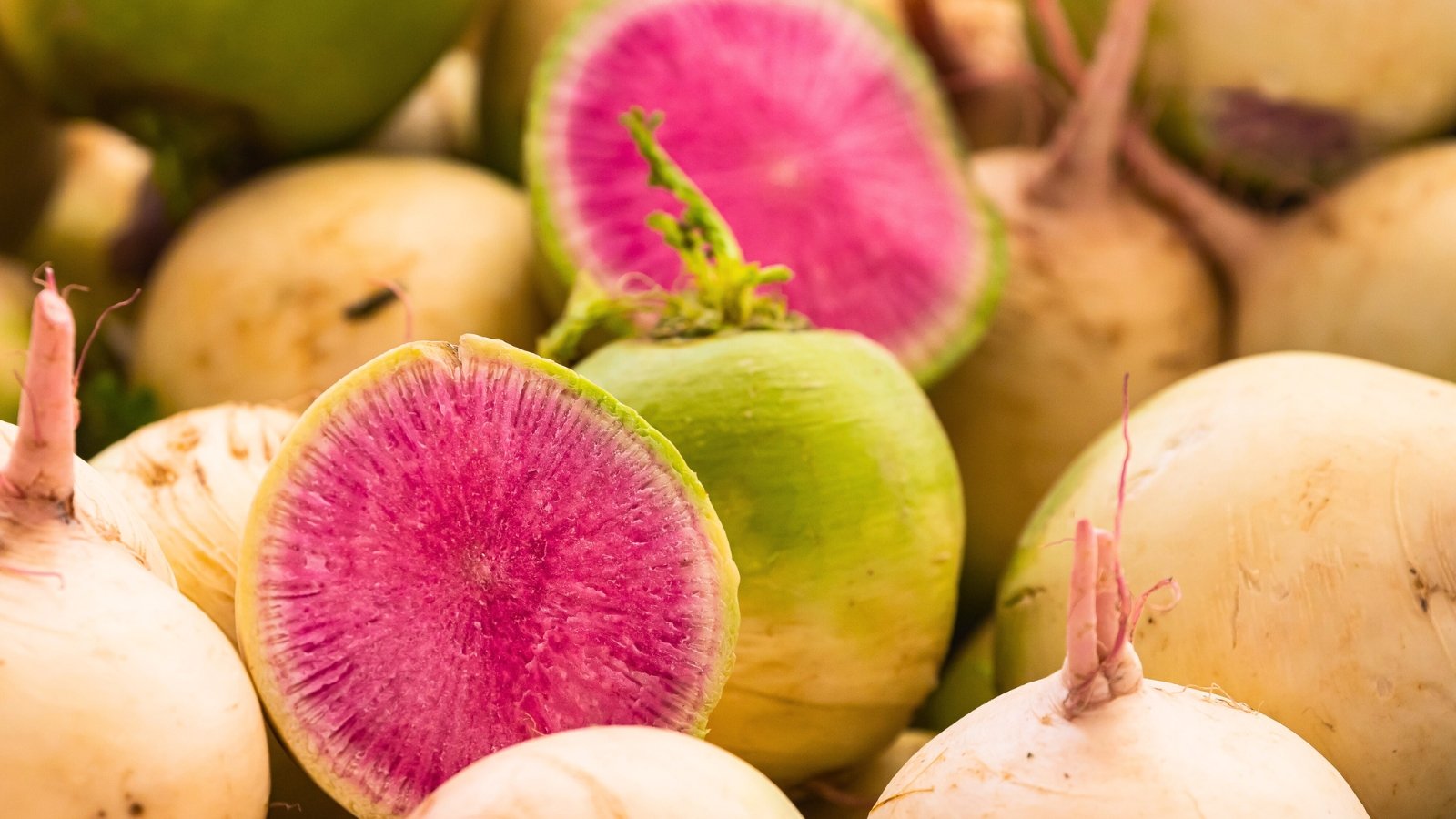 Early to mature and easy to store.
Early to mature and easy to store.‘Red Meat’ is a specimen of a winter radish with its light green and creamy white skins and cerise-pink flesh. The watermelon variety grows two to four inches and is earlier to mature than others on the list, at only 50 to 60 days.
With a sweet and almost fruity flavor, enjoy ‘Red Meat’ raw or salt fermented for extra crunch as a salad, sandwich, or taco topper. Toss it in stir-fries for texture and added sweetness.
The variety bolts in warm temperatures and does best with planting in the fall’s cool down. In the right conditions, ‘Red Meat’ stores all winter for a lasting, antioxidant-rich return.
‘Alpine’
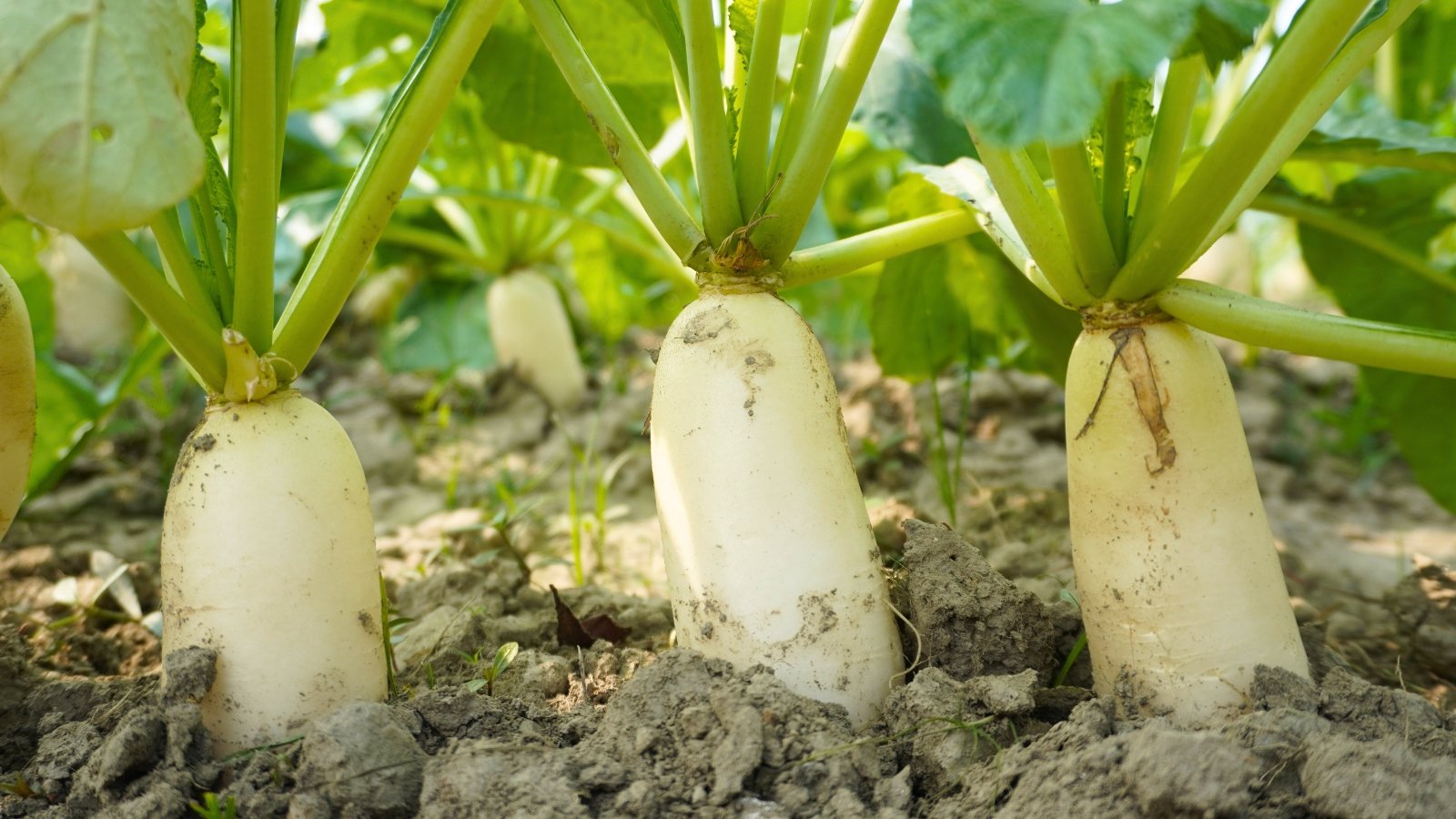 Compact, sweet roots ideal for small gardens.
Compact, sweet roots ideal for small gardens.‘Alpine’ is a Korean white radish traditionally used in kimchi. The bright roots are five to eight inches long and two inches wide. Stout, smooth, and green-shouldered, ‘Alpine’ has a sweeter flavor than long daikon types.
Because of its short, sturdy taproots, ‘Apine’ makes a good selection for heavy or rocky soils. With good bolt resistance, it withstands sowing in spring or summer in cool climates with temperatures in the 70s (around 21°C). ‘Alpine’ is ready in about 55 to 60 days from sowing.
‘China Rose’
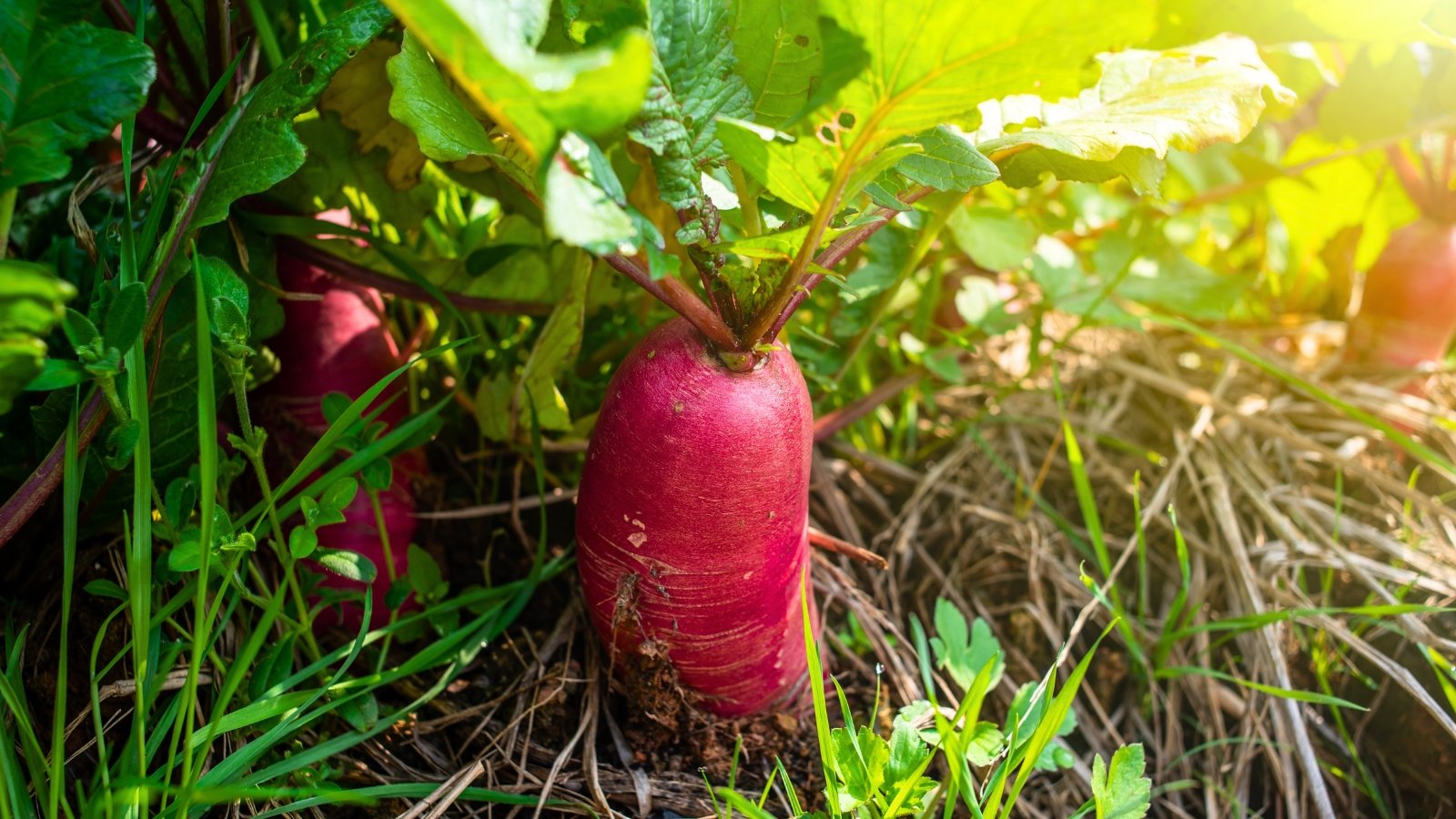 Cold-hardy and great for crisp, fresh eating.
Cold-hardy and great for crisp, fresh eating.‘China Rose’ is another pretty winter radish with dark pink roots that fade to lighter shades at their tips. The cylindrical five-inch roots taper at the ends. Flesh is crisp white, firm, and mild among the winter group, and a good selection for fresh eating.
‘China Rose’ is cold-hardy and durable. Grow the adaptable variety in fall, winter (warmer climates), and spring.
Radish sprouts are popular in Chinese and Japanese cuisine, and ‘China Rose’ brings the same spicy radish taste as a topper for salads, sandwiches, and soups. Add them to any dish that would benefit from a crisp, fresh bite. Simmer them in stews and baked dishes for extra flavor. Sprouts and microgreens are ready in four to eight days.
‘Tokinashi All Season’
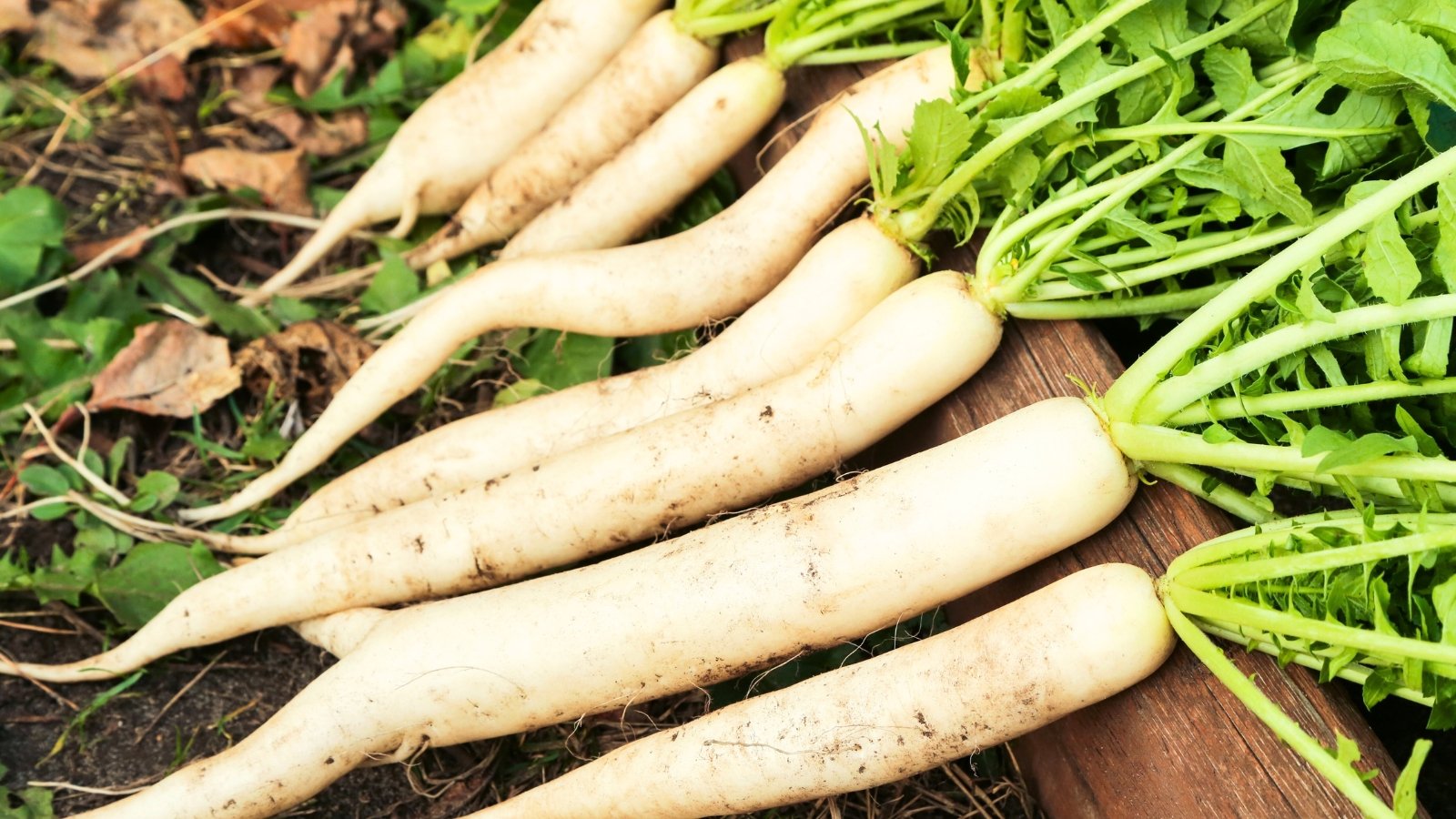 Reliable crop for extended sowing through the year.
Reliable crop for extended sowing through the year.‘Tokinashi All Season’ is an heirloom daikon radish that grows in various conditions for an extended planting and growing season. The crop is slow to bolt, lasting longer into warm temperatures for successional rounds. Climates with moderate summers and winters can grow the variety year-round.
Two-inch thick white roots reach 10 to 14 inches long and taper uniformly like a carrot. ‘Tokinashi All Season’ is ready in 50 to 60 days.


 1 day ago
1
1 day ago
1
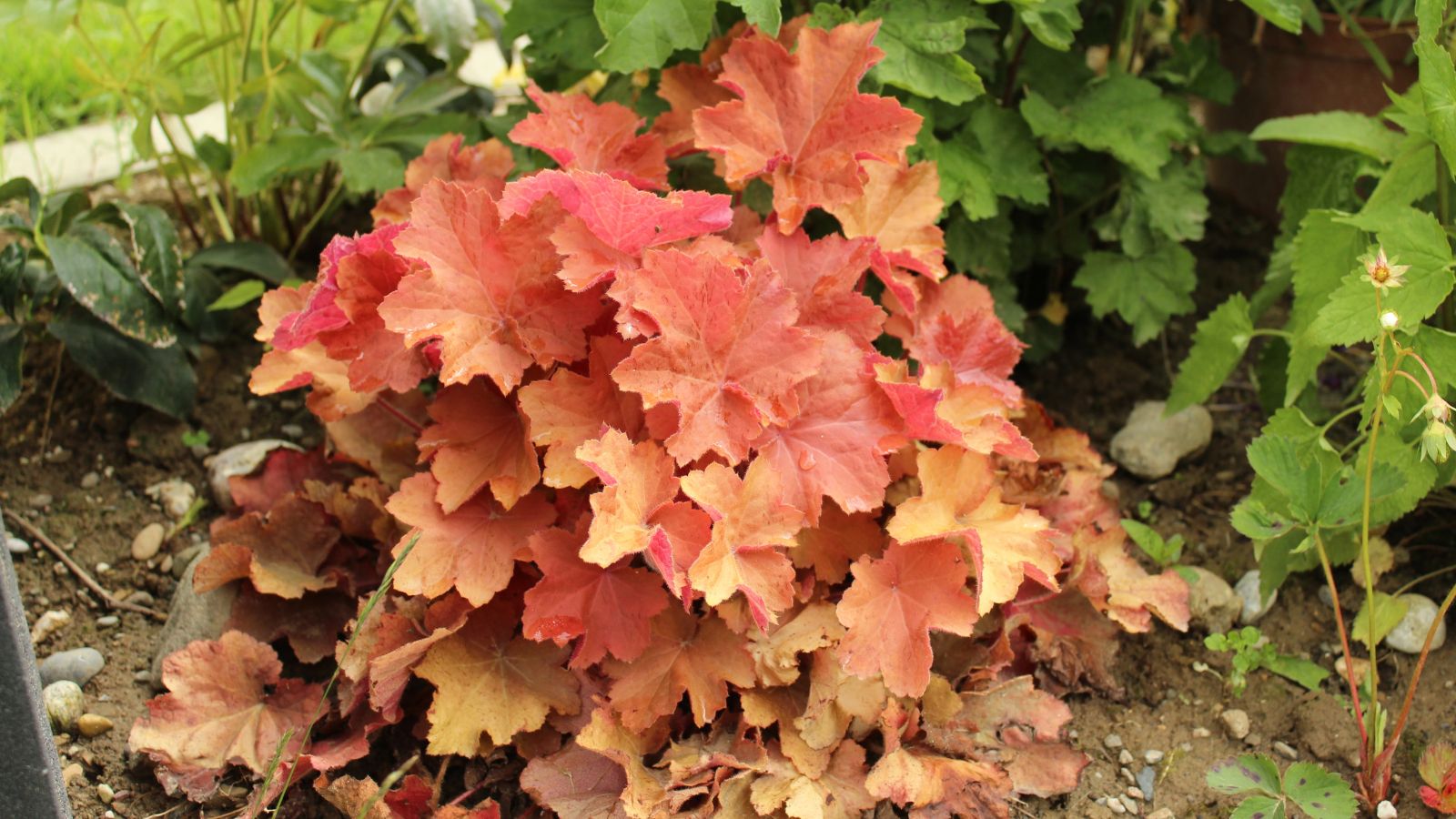
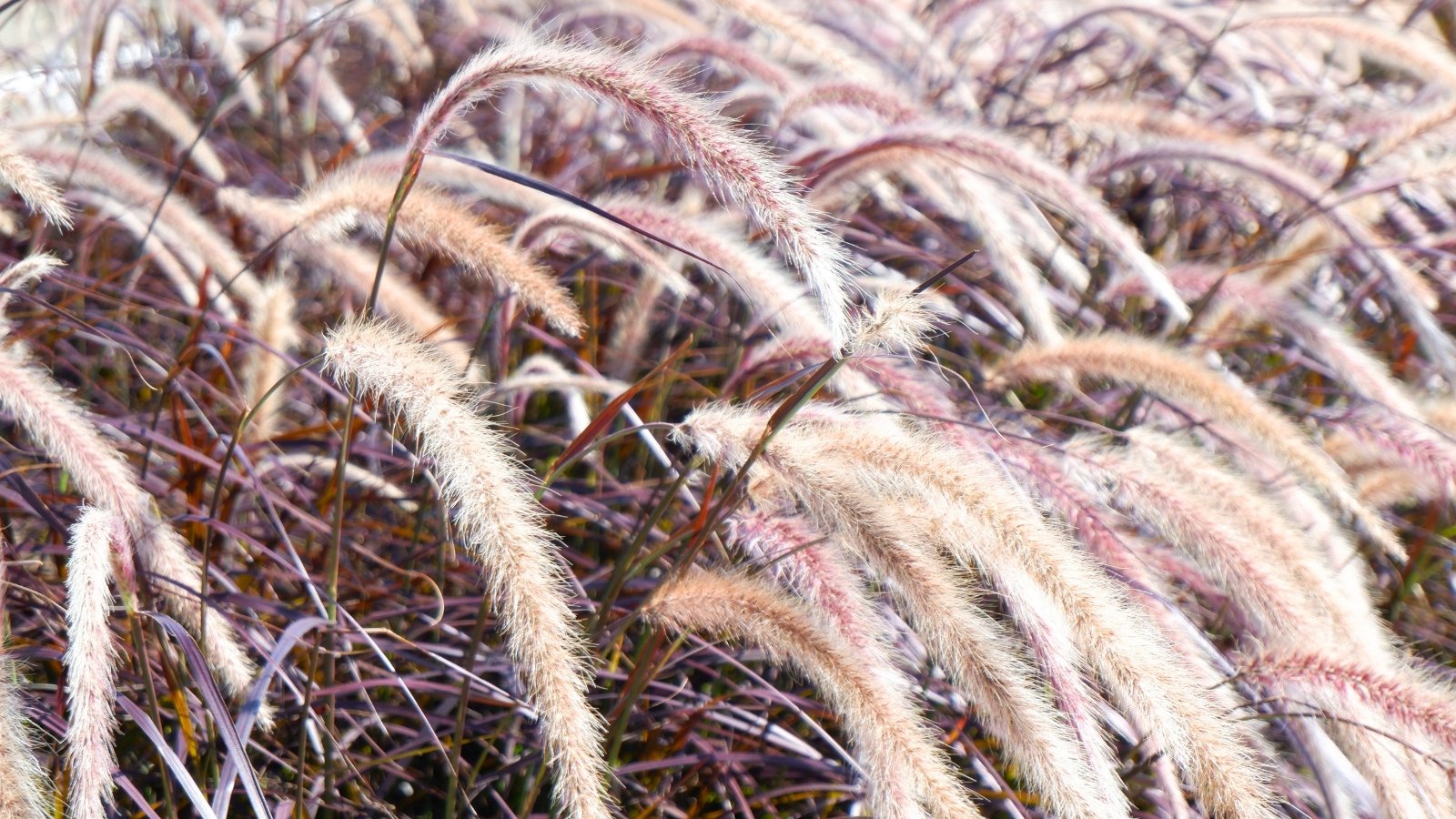

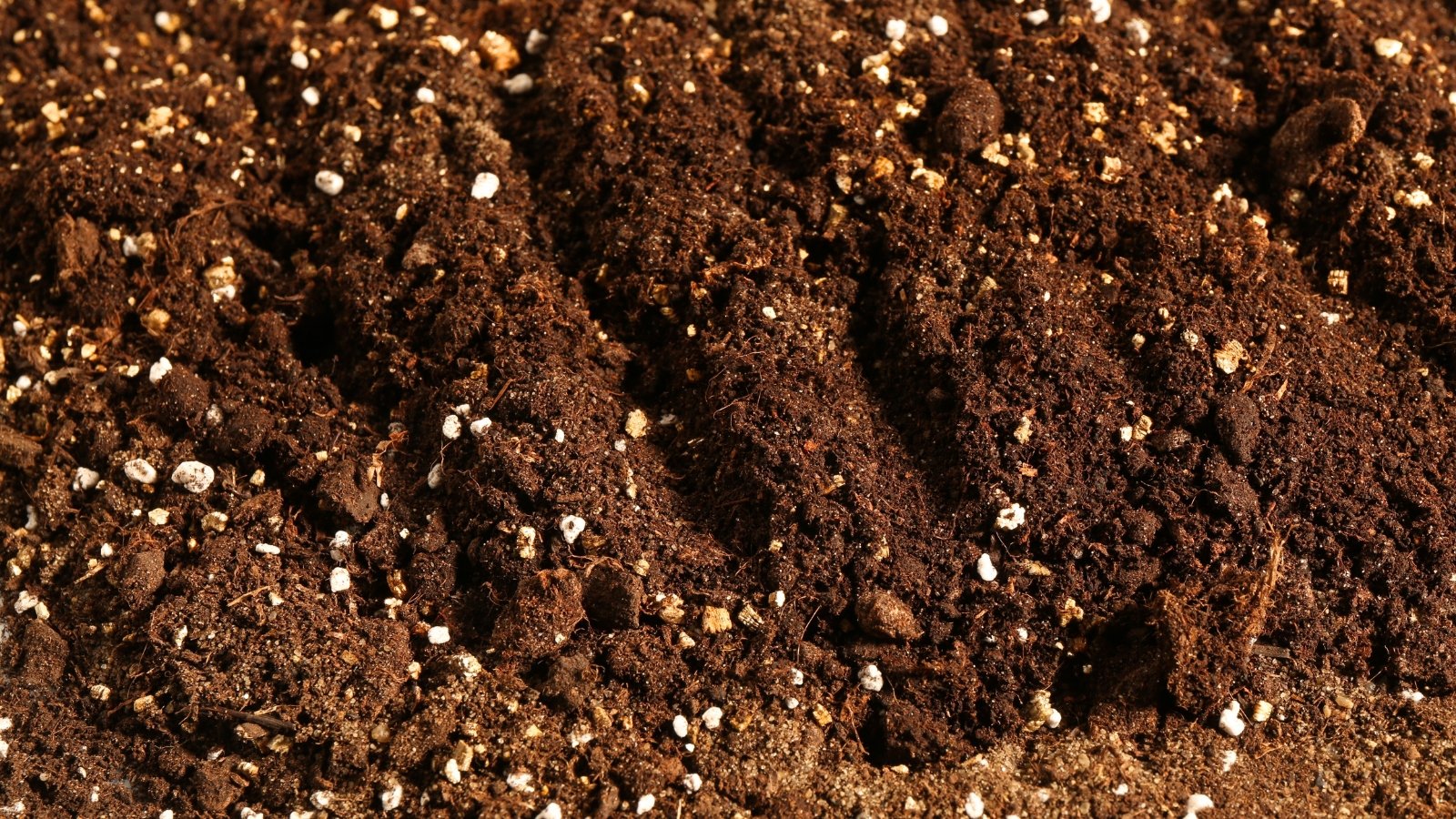
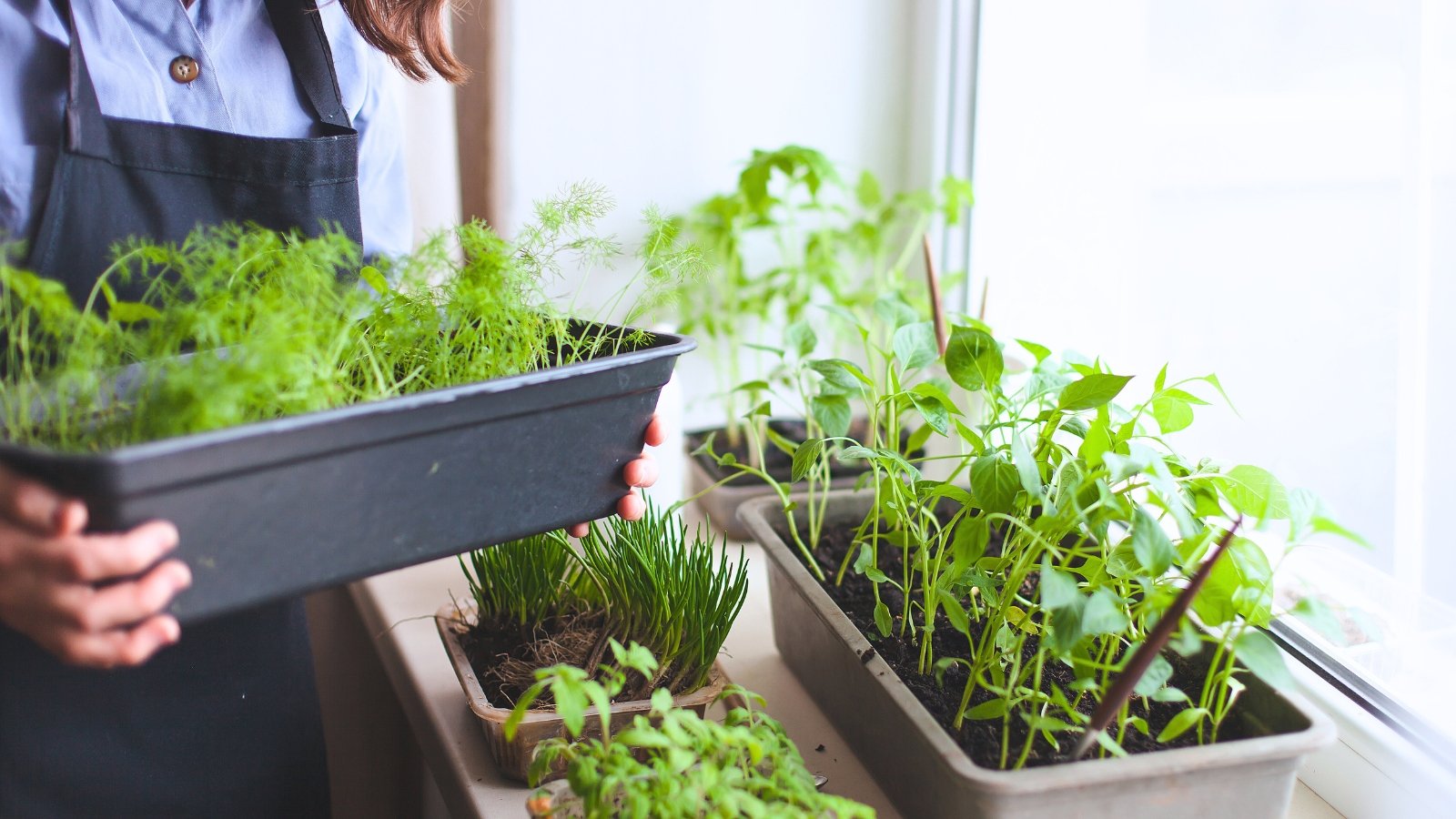
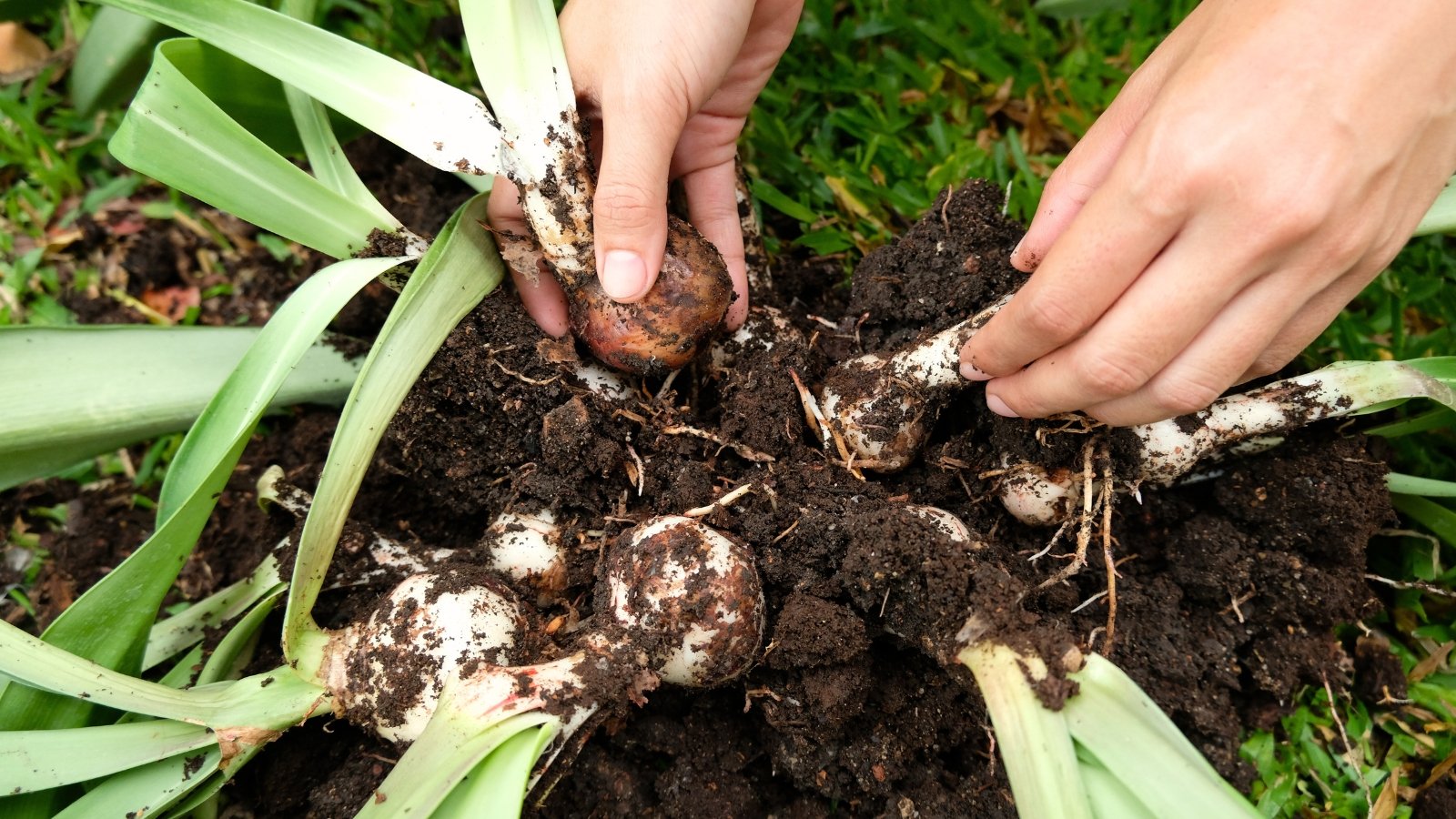















 English (US) ·
English (US) ·  French (CA) ·
French (CA) ·